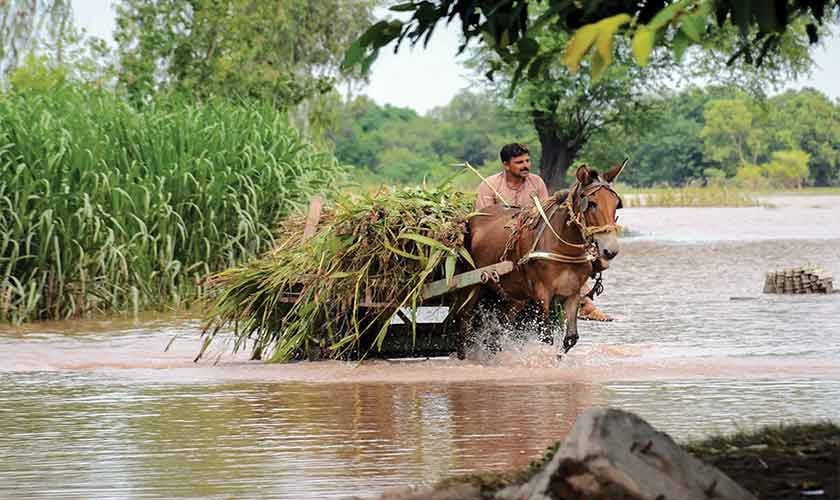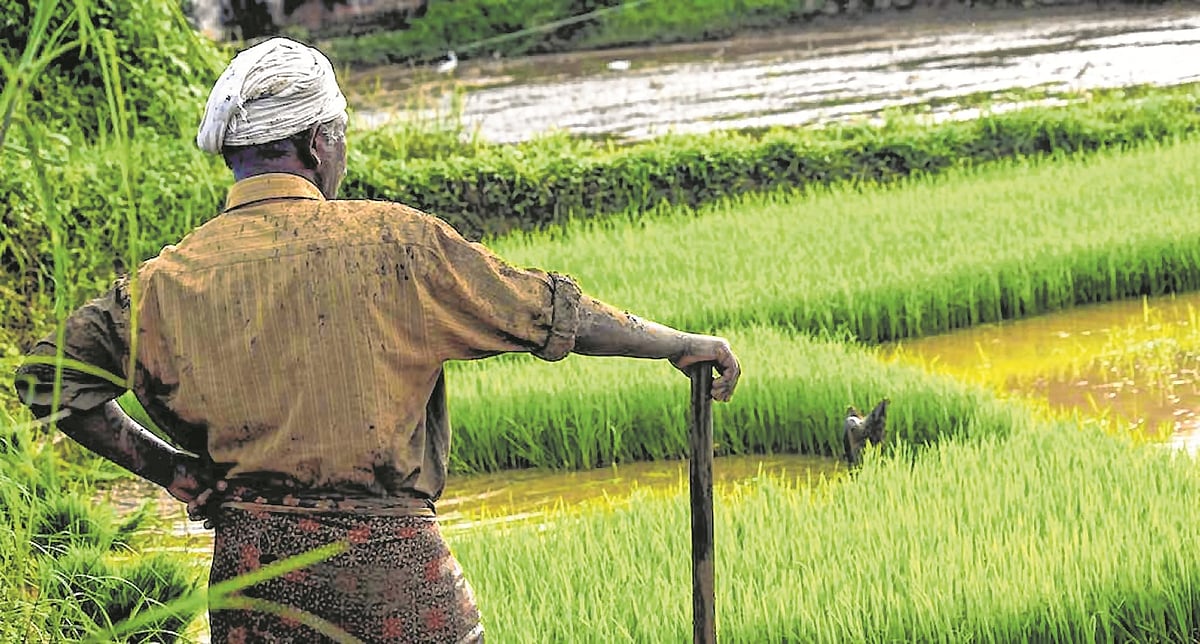The Prime Minister has announced an agriculture and climate emergency in the country—an urgent measure to combat the flood-induced calamity. Rescue and relief operations are currently in full swing, but the daunting task of rehabilitation lies ahead. Beyond pooling resources and energy, what is needed most is national unity and resolve.
According to the Provincial Disaster Management Authority of Punjab, floods have displaced 4.49 million people and inundated 4,489 villages in the province. The first and foremost challenge is to ensure that life returns to normal, or as close to it as possible. With thousands of villages submerged, going back home may mean returning to something that no longer exists. Significant investment is needed to rebuild homes, roads, culverts, waterways, and farmlands. In response, the government has announced a house-building subsidy of up to Rs 1 million.
Using digital maps and satellite images could help determine actual needs more accurately, rather than relying solely on traditional patwaris. A federal committee under the Planning Minister is already at work on this front. Furthermore, the Federal Bureau of Statistics has recently concluded an agriculture and household census, enabling fairly precise assessments.
Being able to stay at home means at least two meals a day for a family. Therefore, the supply of essential commodities and utensils must be ensured. Currently, there is no firewood, gas, or electricity—and in some places, not even dung-cakes to light a fire. Solar panels offer a potential remedy in such situations.
Many flood-affected people have lost their belongings and will inevitably face cash shortages. Cash handouts through the Benazir Income Support Programme could be redirected to flood zones to provide immediate relief.
Agricultural recovery hinges on the effective drainage of floodwaters. Delays in drying drained lands shorten the window for plantation, making access to tractors and other machinery crucial. Though a lack of drainage in low-lying areas poses challenges, it also creates opportunities for aquaculture.
With the Rabi season only a few weeks away, access to farm machinery and inputs—such as seeds, fertilizers, diesel, and pesticides—can make a critical difference. While wheat sowing is traditionally the next major task, equally important are edible oilseeds, fodder, and vegetables. Easy loans, subsidies, and philanthropic efforts must be mobilized swiftly.
A shortage of supplies is expected, and the crisis could be compounded by greed on the supply side. Effective communication, coordinated actions, and good governance will be key to mitigating these challenges.
The impact of higher prices for essential items like flour, ghee, sugar, pulses, onion, potato, chillies, tomato, milk, and tea extends beyond the rehabilitation zones. Consumers across the country are affected by the floods’ aftereffects, making the role of the provincial Food and Price Control and Commodity Management Department (PCCMD) crucial. Their tasks include stabilizing food supplies, protecting markets, and enabling recovery by ensuring timely access to essential food items and farm inputs.
Coordination between federal and provincial government arms is essential for holistic disaster management. Reports indicate that the government is in the process of importing sugar and wheat. Monitoring markets and stocks is an urgent priority. Efforts have been ongoing for several years to establish a commodity dashboard at the Ministry of Food Security, which must now be evaluated for effectiveness.
While the government’s policy of deregulation remains, the emergency demands the use of price control mechanisms—tracking supplies, monitoring price fluctuations, and preventing hoarding. Logistic challenges, such as broken roads and lack of transportation, further complicate relief efforts.
Public health during the rehabilitation process presents another challenge. Beyond food, other critical biological needs must be addressed. There is a significant risk of waterborne diseases and epidemics among humans and livestock. Preventive measures should include providing clean drinking water, adequate toilet facilities (especially for women and children), and vaccination programs.
The floods are now understood as a consequence of climate change (global warming), which is likely to recur. Investment in better data analytics and forecasting is necessary. Meteorologists are already warning that floods in 2026 could be equally intense. There is an urgent need to prepare a long-term resilience plan.
Storage of floodwater and improvement of drainage systems deserve immediate attention. Floods provide opportunities for groundwater recharge using simple engineering interventions like recharge wells, check dams, wetlands, and flood canals. It is vital to prohibit the obstruction of waterways.
The magnitude of the current disaster and future threats demands building resilient communities. The government can serve as an enabler and facilitator for community-led institutions that promote inclusive and homegrown solutions.
The year 2025 has been designated as the Year of Cooperatives. Cooperatives have historically been institutions of mutual aid and affirmative action—a catalyst for agricultural and rural development. Their guiding principles are self-help and collective bargaining. Commodity cooperatives are common in the developed world, providing complete value chain assistance to members. They often maintain machinery pools under joint ownership.
In Pakistan, there was once an elaborate network of cooperative societies, a bank, and training institutes. Unfortunately, this system has been decimated over time, with many cooperatives becoming tools of elite capture. The social dynamics often trump legal frameworks.
However, there is now an opportunity to organize stressed communities for self-help, volunteer work, and collective healing. Reviving cooperatives could foster resilience and empowerment.
Finally, investing in research systems is essential. Pakistan has a broad network of academic and research institutions at both federal and provincial levels. International linkages can be developed by leveraging our diaspora, which holds significant intellectual and financial resources.
At the Punjab Higher Education Commission, a cluster approach has been adopted to pool human resources for research. There is enthusiastic response across universities regarding climate change and food and agriculture.
Flood-affected zones represent distinct agro-ecologies and deserve strategic research based on empirical evidence. There is no need for new bricks and mortar or new centers of excellence—only operational funding is required to achieve targeted indigenous solutions. These include climate adaptation, migration, early warning systems, logistics, community controls, genetics, soil and water amendments, food storage and processing, pest and disease control, mechanization, livestock feed and health, agricultural credit, insurance and marketing, development of new crops, outreach, capacity building, and disaster preparedness.
Pakistan has 272 universities with a wealth of motivated human resources. However, most are currently starved of operational research funds. Supporting their efforts is critical for building resilience against future climate calamities and ensuring a sustainable agricultural future.
https://www.thenews.com.pk/tns/detail/1345062-an-opportunity-for-resilience



